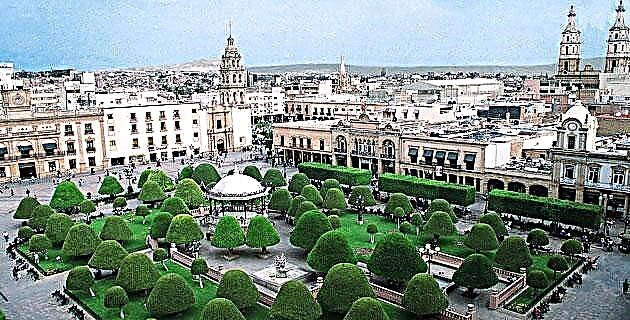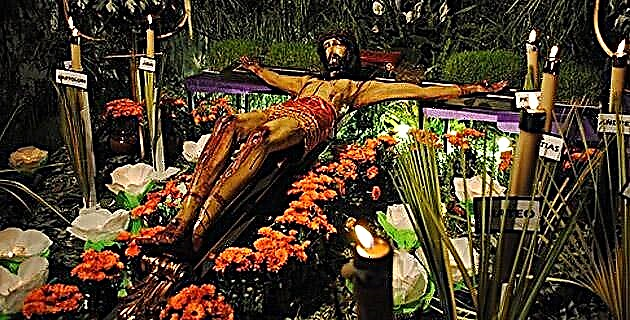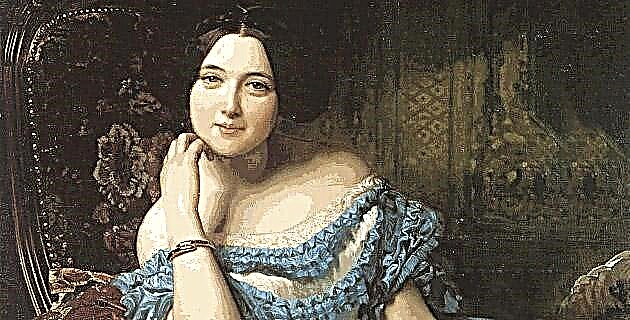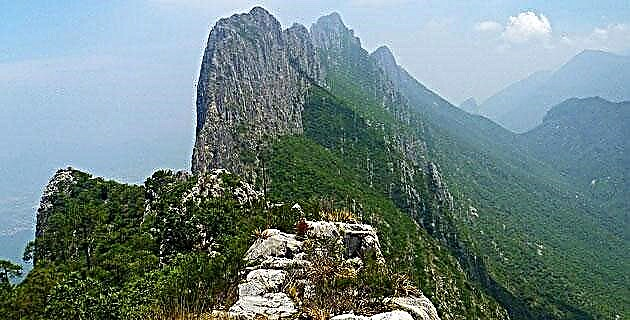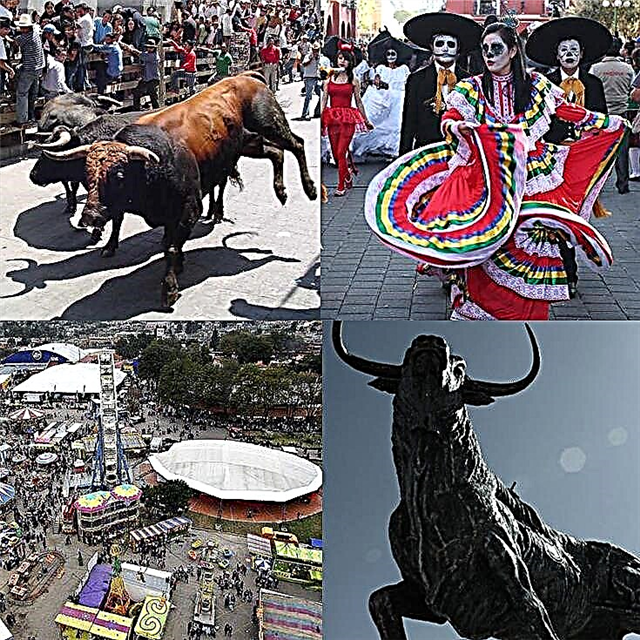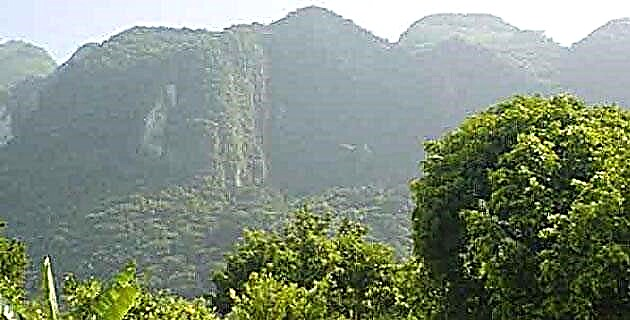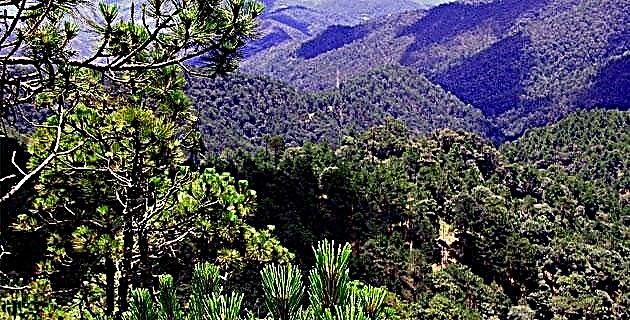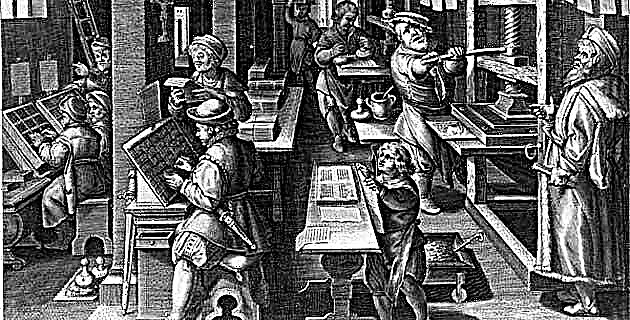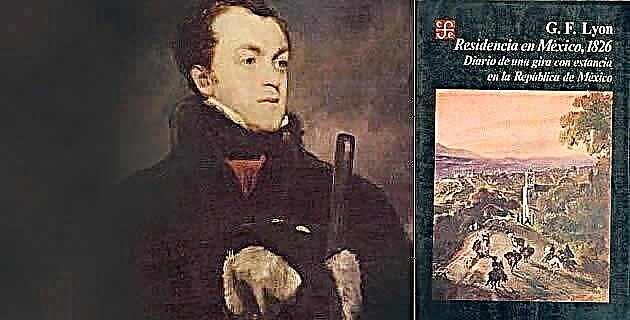
George Francis Lyon, the traveler with whom we are now concerned, was commissioned by the English mining companies of Real del Monte and Bolaños to carry out a work and research trip to our country.
Lyon left England on January 8, 1826 and arrived in Tampico on March 10. The planned route was from Puerto Jaibo to San Luis Potosí, Zacatecas, Guadalajara, Valladolid (Morelia), Mexico City, the current state of Hidalgo, Jalapa and finally Veracruz, the port where it embarked on December 4, that same year. After passing through New York, the ship was wrecked and Lyon managed to save only a few things, including this newspaper; it finally reached England and published it in 1828.
THE GOOD AND BAD
In keeping with his time, Lyon has social opinions very English and very of his time; some of them are between annoying and funny: “When women are allowed to occupy their proper place in society; when girls are prevented from playing in the streets, or with dirty people acting in the capacity of cooks; and when the use of corsets, (!) and bathtubs is introduced, and cigarettes are forbidden to the weaker sex, men's manners will change radically. "
“Among the great public buildings (of San Luis Potosí) there is a very healthy one to lock up rebellious women (jealous fathers or husbands who enjoy the privilege of locking up their daughters and wives!). The church attached to, this guardian of virtue building is very dark and gloomy. "
Of course, the Creoles were not his favorite: “It would be very difficult, even in this universally lethargic country, to find a more indifferent, idle and sleepy group of people than that of Pánuco, who for the most part are Creole. Surrounded by a land capable of the best cultivation, living in a river that teems with the best fish, they have hardly a vegetable, and rarely other food than corn tortillas, and occasionally a little jerky. Naps seem to last half a day, and even talking is an effort for this lazy breed. "
CONTROVERTED OPINIONS
A couple of quotes from Lyon show that our people are very well behaved or that English is very badly behaved: “I accompanied my hosts and their wives to the theater (in Guadalajara), which I really liked. It was neatly arranged and ornamented, and the boxes were occupied by ladies dressed rather in the fashion of France and England; so, had it not been for the fact that everyone smoked, and for the silence and good behavior of the lower class of the audience, I could almost have imagined finding myself in England. "
“Thirteen thousand dollars was spent on this festival on rockets and shows, while a ruined pier, downed batteries, unrepaired public buildings, and unpaid troops spoke of the state's poverty. But the good people of Vera Cruz, and indeed all Mexicans, especially love shows; and I must confess that they are the most orderly and well behaved crowd that I have seen on this type of occasion. "
Although Lyon expresses lightness with respect to the indigenous Mexicans ("these poor people are a simple and even ugly race, and for the most part poorly formed, whose clumsiness is increased by the habit of walking with their toes inwards" ), also has recognitions that should be highlighted: "The Indians bring for sale small toys and baskets, made with great skill, and the charcoal burners, while waiting for their customers, have fun carving small figures of birds and other animals on the merchandise What do you sell. The ingenuity of the lowest class in Mexico is truly extraordinary. The leperos (sic) make beautiful figures out of soap, wax, the kernel of certain trees, wood, bone and other materials. "
“The proverbial honesty of the Mexican muleteers is unequaled to this day; and with very few exceptions, it stood the test of the recent riots. I confess that of all the natives of Mexico, the muleteers are my favorites. I have always found them attentive, very courteous, helpful, cheerful, and totally honest; and their condition in this last aspect can be better estimated from knowing the fact that thousands and even millions of dollars have been frequently entrusted to their charge, and that they have on many occasions defended, at the risk of their lives, against those gangs of thieves. … The last on the social list are the poor Indians, a mild, long-suffering and despised race, who with affection are capable of receiving the best teachings. "
It is very interesting to note that what Lyon observed in 1826 is still valid in 1986: "The Huichols are in fact the only people who still live entirely differently from those around them, protecting their own language." and diligently resisting all the efforts of its conquerors. "
THE DEATH OF A CHILD
The different religious formation that Lyon had made him wonder about some of the customs of our town. Such was the case at the funeral of a child, which to date continue to be like "parties" in many rural areas of Mexico: "When listening to music at night (in Tula, Tamps.) I found a crowd with a young woman woman who carried on her head a small dead child, dressed in colored papers arranged in the form of a tunic, and tied to a board with a white handkerchief. Around the body they had placed a profusion of flowers; the face was uncovered and the little hands tied together, as in a prayer. A violinist and a man who played a guitar accompanied the group to the door of the church; and the mother having entered for a few minutes, she appeared again with her child and they walked away with their friends to the burial site. The boy's father followed further behind with another man, who was helping him with a wooden torch lit to launch hand rockets, the kind of which he carried a large bundle under his arm. The ceremony was all of rejoicing and joy, since all children who die young are supposed to escape purgatory and become "little angels" immediately. I was informed that the burial was to be followed by a fandango, as a token of rejoicing that the baby had been taken from this world. "
Within his aversion to Catholicism, he makes an exception: “The poor friars of Guadalupe are a very stoic race, and I believe that they should not be classified like the flock of lazy people who feed on the public in Mexico without utility. They really live in all the poverty that their vow prescribes, and their whole life is dedicated to voluntary suffering. They have no personal property other than a rough gray woolen gown, which is not changed until it is worn, and which, having obtained the smell of holiness, is then sold for twenty or thirty dollars to serve as a mortuary suit for some devotee, who supposes that he can sneak into heaven with such a holy wrapping. "
THE GUAJOLOTE DANCE
I would not be surprised if the following custom was still preserved, having contemplated -as I have done- the dancers of Chalma: In Guadalajara “we stopped for a while at the chapel of San Gonzalo de Amarante, better known by the name of El Bailando. Here I was fortunate to find three old women praying quickly, and dancing very seriously at the same time before the image of the saint, who is celebrated for his miraculous cures of "cold and fever." These grave and venerable characters, who perspired profusely from every pore, had chosen the dance that is well known in the country of the Guajolote or dance of the Turkey, for its resemblance in grace and dignity to the bucking of infatuation that these imposing birds do ”.
“Intercession, or rather the individual power of the saint, because the saints in Mexico most of the time have preference over the Divine, is highly established. He himself receives, as an offering of gratitude, a wax leg, arm, or any other miniature body part, which is found hanging with hundreds of others in a large framed painting on one side of the chapel, while the The opposite wall is covered with small oil paintings where the miracles performed by those who could thus provide such testimonies of devotion stand out; but all this idolatrous charade is falling into disuse. "
Of course, Lyon was wrong, as the custom of "miracles" on altars of famous saints is still in vogue.
Other customs, on the other hand, clearly tend to disappear: “Evangelists (or scribes) practice their vocation as public scribes. I saw about a dozen of these men sitting in various corners near the doors of the shops, busy writing with pens under the dictation of their customers. Most of them, as can be easily seen, wrote on different subjects: some dealt with business, while others, as was evident from the pierced hearts at the top of the paper, transcribed the tender feelings of the young man or woman who he was squatting beside her. I peered over my shoulder at many of these helpful scribes who sat with their paper on a small board that rested on their knees, and I did not see any who wrote badly or had bad handwriting. "
SNOW AND SNOW
Other culinary customs - fortunately they are preserved, although the raw material now has a very different origin: "On my walks I greatly enjoyed the ice creams, which here (in Morelia) are very good, getting the frozen snow from the mountain of San Andrés, the one that supplies all the ice cream parlors with her winter hat. "
"This was the most exquisite milk and lemon ice cream (in Jalapa), for which the snow is brought from Perote at the beginning of the year, and in the fall, from Orizaba." Of course, Lyon refers to the volcano of the same name. And with regard to snow, I must note that deforestation nowadays makes what this English traveler observed very strange: Nevado de Toluca snowed on September 27, and Malinche on October 25; currently, if they would be in January.
And passing within the same branch of sweets- from ice cream to chewing gum, I must confess that I was surprised to learn that women in Jalapa were already chewing them: “I also found an assortment of another article, called 'sweet land', which they eat women, why or for what, I did not know. It is made up of a type of clay kneaded into small cakes, or animal figures, with a type of wax that sapote trees exude. " We already knew that chewing gum is the sap of the sapodilla, but now we know that the Americans are not the pioneers in using it for that unsightly habit.
INTEREST IN THE PREHISPANIC
Lyon provides us with various data on pre-Hispanic remains that I should not neglect. Some are probably idle, others could be a new clue: “I found out that in a ranch called Calondras, about nine leagues (from Pánuco), there are some very interesting old objects, located on the side of a hill covered with wild trees ... the main one is a large chamber like an oven, on the floor of which a large number of flat stones were found, similar to those used by women to grind corn, and are still available today. These stones, like a large quantity of other durable articles of furniture, removed long ago, are considered to have been deposited in the cave in some flight of the Indians. "
“I discovered (in San Juan, Huasteca potosina) an imperfect piece of sculpture, with a distant resemblance to a figurehead with the figure of a lion, of a ship, and I heard that there were some more in an ancient city some leagues distant, called` Quaí-a-lam. "
“We landed in Tamanti to buy milk and a half of a stone goddess, of whom I had heard in Pánuco, which was a heavy load for the four men who carried her to the canoe. The piece now has the honor of being mixed with some Egyptian idols in the Ashmolean Museum in Oxford. "
“Near a village called San Martín, located a long day's journey through the mountains to the south (from Bolaños, Jal.), It is said that there is a cave that contains several stone figures or idols; And had I been the master of my time, I would certainly have visited a place that the natives still speak of with such interest. The only antiques I was able to get in Bolaños, offering rewards, were three very good stone wedges or basalt axes; And when it was learned that I was buying curios, a man came to inform me that after a long day's journey, 'bones of the Gentiles' could be found, of which he promised to bring some if I provided them with mules, since their size was very big."
ONE SURPRISE AFTER ANOTHER
Of the different mining estates that Lyon visited, some images stand out. The current “ghost” town of Bolaños was already so in 1826: “The today sparsely populated city has the appearance of having once been first class: the ruins or half-buildings of splendid churches and beautiful sandstone buildings were not equal to the ones I had seen so far. There was not a single mud hut or shack on the site: all the houses were built of superior stone; and the public buildings that were now empty, the ruins of the immense silver estates and other establishments connected with the mines, all spoke of immense riches and splendor that must have reigned in this now quiet and retired place. "
Fortunately, almost nothing has changed in this other wonderful place: “Real del Monte is indeed a very beautiful place, and the valley or ravine that extends north of the town is simply superb. The rapid torrent of mountains flows over it into the rough and rocky channel and from the banks to the summit of the high mountains that border it very closely there is a thick forest of ocotes or pines, oak and fir. There will be hardly a corner in all this extension that is not worthy of an artist's brush. The varied hues of the rich foliage, the picturesque bridges, the steep rocks, the well-populated paths, drilled in the porphyry rocks, with the ever-varying curves and jumps of the torrent, have a novelty and a charm little equaled.
The Count of Regla was host to Lyon, but that did not save him from its criticisms: “The count was living- in a one-story house (San Miguel, Regla) that was half ramshackle, poorly furnished and not very comfortable; all the rooms overlook a small courtyard in the center, depriving themselves of the advantage of a beautiful view. The owners of the largest and most beautiful hacienda, which earns them an income of $ 100,000, are content with lodgings and comforts that an English gentleman would hesitate to offer his servants. "
The austere architectural tastes of the English could not capture the wonder of Mexican colonial art: “We rode to (Santa María) Regla and entered the celebrated Hacienda de Plata, which was said to cost £ 500,000. It is now an immense ruin, filled with monstrous masonry arches, which seem to have been built to support the world; and I believe that half of the enormous sum was spent on this; nothing can take away that air of desolation, which gave the hacienda the appearance of a collapsed fortress. It lies in the depths of a steep ravine, surrounded by basalt cliffs of such singular beauty, of which so much has been said. "
Between San Luis Potosí and Zacatecas he visited the Hacienda de las Salinas, which “is located in an arid plain, close to where the swamps are found, from which the salt is extracted in an impure state. This is consumed in large quantities in mining establishments, where it is used in the amalgamation process. " Will it still be in production today?
PUMPS IN TAMPICO
And regarding salt, he found near Tula, Tamps., A salty lake about three kilometers in diameter, apparently devoid of animal life. This reminds me that there are cenotes in Tamaulipas (towards Barra del Tordo), but it is not the only Yucatecan curiosity that exceeds the limits of this peninsula; worth this anecdote lived by Lyon at a dinner in Tampico: “A gentleman stood up suddenly, with an air of great enthusiasm, waving his hand over his head with a shout of joy, and then proclaimed a 'bomb!' The whole company rose to support his lively impulse, while the glasses were filled and silence was kept; afterwards, the toaster gravely took out of his pocket a prepared copy of his verses. "
It seems to me that before being a sailor and a miner, Lyon had the heart of a traveler. In addition to the places required by the nature of his work trip, he visited Ixtlán de los Hervores, Mich., And it is observed that the current boiling springs and geysers had already had the same imposing appearance for at least 160 years; As in Rotorua, New Zealand, indigenous people cook their food in hyperthermic sources. It reports other SPAs ("health for water", in Latin): at the Hacienda de la Encarnación, near Villanueya, Zac., And at the Hacienda de Tepetistaque, "five leagues to the east" from the previous one. In Michoacán he visited the source of the Zipimeo River and its “beautiful waterfall, between rocks and trees.
METALS AND PETROLEUM
In Hidalgo he was in Piedras Cargadas (“one of the most wonderful places in rock landscapes that I have ever seen”) and he ascended to the Pelados and Las Navajas hills. “Obsidian is found in abundance throughout the hills and plains that surround us; the vein and the wells made by the Indians are at the top. I don't know if the excavations have been deep, but at present they are almost covered, and only if they are sufficiently excavated do they show their original shape, which is circular ”.
The copper mines in Somalhuacán seem very interesting, by Perote: “The copper has only been extracted from holes or small frontal caves of light cliffs, and it is so abundant that the place could justly be called 'virgin soil'. Most of these rocks are rich in metals; and the small excavations made by those who have searched for gold, and the larger openings for the extraction of copper, are seen from below like eagles' nests in the steep cliffs above.
His description of the “black gold” of the Chila estuary is also very interesting: “There is a large lake, where oil is collected and carried in large quantities to Tampico. Here it is called tar, and it is said to bubble from the bottom of the lake, and to float in large numbers on the surface. The one I observed repeatedly was hard and good-looking, and was used as a varnish, or to cover the bottom of canoes. " Also of great interest, although for other reasons, is the way mezcal was made in San Luis Potosí: “It is the fiery liquor distilled from the heart of the maguey, from which the leaves are cut to the base of their roots and then pound well and boil; It is then placed in immense leather boots suspended from four large stakes where they are allowed to ferment, adding them with pulque and the branches of a bush called 'yerba timba' to aid fermentation. These leather boots contain about two barrels each. When the liquor is sufficiently prepared, it is emptied from the boots into the alembic or still, which is inside a huge container of staves and rings, like a very large barrel, from which the distilled liquor flows through a channel made of a leaf. of maguey. This barrel is over an underground fire, and the cooling water is deposited in a large copper vessel, which is fitted on top of the barrel and stirred to taste. The mezcal is then stored in whole ox hides, of which we saw a very full room, and its appearance was that of a number of cattle hanging from the hocks, without legs, head or hair. Mezcal is sent to the market in goat skins. "
IMAGES LOST FOREVER
Although I would like to end by leaving this "taste in my mouth", to avoid suspicions I prefer to do it with two missing stamps, unfortunately, forever; from Lerma, a bucolic: “It is surrounded by an extensive swamp crossed by good elevated roads; and from here the Rio Grande is born ... The pools of water are here of beautiful transparency, and the tall reeds that fill the swamp are the recreational place of a great variety of aquatic birds, among which I could count in a very small space thirty-one nine white herons. "
And another, very far away, from Mexico City: “Its lively whiteness and lack of smoke, the magnitude of its churches and the extreme regularity of its structure gave it an appearance that has never been seen in a European city, and the they declare unique, perhaps unmatched in style.

